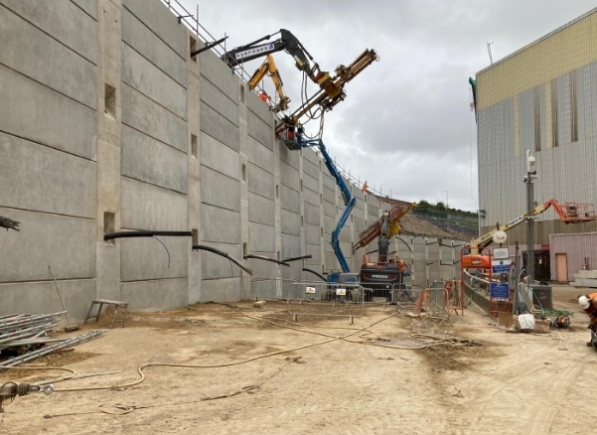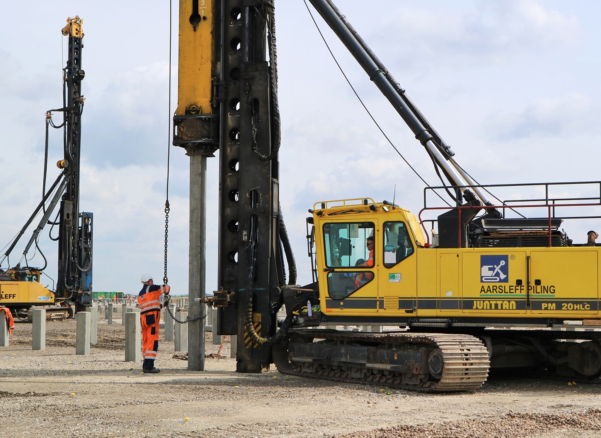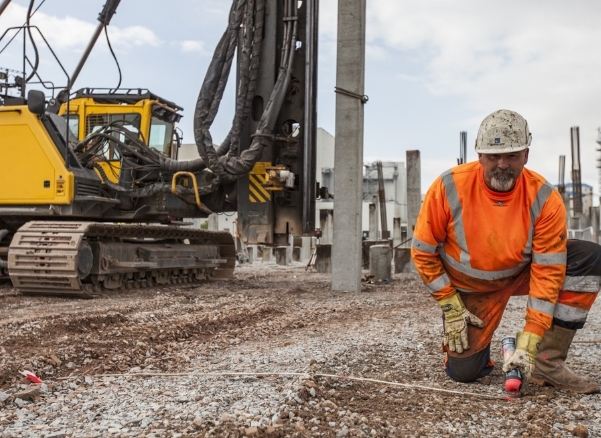What is a Retaining Wall?
What Is the Purpose of a Retaining Wall?
A retaining wall is a steep vertical or near-vertical structure designed to retain soil to a slope, preventing it from collapsing or slipping. [1]
The primary purpose of retaining walls is to prevent soil erosion and maintain the stability of slopes. Slope stabilisation can be a crucial aspect of a project, especially when dealing with uneven terrain. For instance, retaining walls is essential in civil engineering and construction projects where a significant elevation difference must be managed between two adjacent areas of land. They help create usable, flat areas on terrains that would otherwise be too steep or unstable.

How Do Retaining Walls Work?
To ensure stability, retaining walls work by resisting the lateral earth pressure. This term refers to the horizontal pressure that the soil exerts against the wall. As the wall holds back the soil, the weight of the soil pushes against it. The weight varies based on how much soil is behind the wall, the angle of the slope and the type of soil. Retaining walls are often designed to either counteract this lateral pressure by using their own weight, incorporate drainage systems to reduce hydrostatic pressure, or use reinforcement methods to help control the force applied by the soil.
Engineers must analyse the lateral earth pressure amongst other factors when designing and constructing a retaining wall. If the wall is not built to adequately withstand these lateral forces, the structure can fail, leading to safety hazards and costly repairs.
Where Are Retaining Walls Used?
Retaining walls are used to bind soils between two different elevations, often in areas of terrain possessing undesirable slopes or in areas where the landscape needs to be shaped severely and engineered for various applications. [2] Some areas where retaining walls are used include:
- Hillside farming
- Landscaping
- Roadway overpasses
- Railways
- Basements
- Underground car parks

What Are the Different Types of Retaining Walls?
There are many different types of retaining walls, each designed for specific functions and soil conditions. Some of the most common types of retaining walls include [3]:
- Gravity Retaining Walls
- Cantilever Retaining Walls
- Sheet Pile Retaining Walls
- Anchored Retaining Walls
- Mechanically Stabilised Earth (MSE) Retaining Walls (Reinforced Soil Retaining Walls)
- Geogrid Retaining Walls
- Gabion Basket Retaining Walls
Benefits of Retaining Walls
Retaining walls offer a variety of practical and aesthetic benefits, making them a valuable addition to both residential and commercial landscapes. Below are ten key benefits of using retaining walls.
- Prevent Soil Erosion – On sloped land, water runoff can quickly wash away topsoil, leading to the destabilisation of the ground and loss of plant life. Retaining walls help to hold the soil in place, providing stability and protecting the landscape from erosion caused by wind, rain or gravity.
- Increase Usable Land – Retaining walls increase the amount of flat, usable land in areas that were once sloped and unworkable. Terracing a hilly site makes room for functional outdoor spaces that would otherwise be impractical or impossible to use.
- Improve Water Drainage – Retaining walls can be designed to manage and direct water flow, preventing water accumulation or pooling in certain areas. Proper drainage systems can be built into the wall to channel water safely away from the retained soil, reducing the risk of erosion, flooding or water damage on the site.
- Protect Buildings and Infrastructure – For homes or structures built on or near slopes, retaining walls act as a safeguard, preventing the collapse of soil and debris that could damage buildings, roads or other nearby infrastructure. This is particularly important in areas prone to landslides or heavy rainfall.
- Increase Property Value – Retaining walls not only serves a functional purpose but can also boost the value of a property. By maximising the usability of outdoor space and providing structural protection from erosion, they can make a residential or commercial property more attractive to buyers.
- Low Maintenance – Many types of retaining walls, especially those made from durable materials like stone or concrete, require little to no maintenance once installed. These walls are designed to withstand harsh weather conditions and the natural movement of soil, making them a long-lasting solution for stabilising land.

Sources
- 1. Designing Buildings. (2021). Retaining Walls. Retrieved 4th October 2024, from:
https://www.designingbuildings.co.uk/wiki/Retaining_walls - 2. Wikipedia. (2024). Retaining Wall. Retrieved 7th October, from:
https://en.wikipedia.org/wiki/Retaining_wall - 3. The Constructor. (n.d). Retaining Wall Types, Economy and Applications. Retrieved 7th October 2024, from:
https://theconstructor.org/geotechnical/retaining-wall-types-use/24566/








